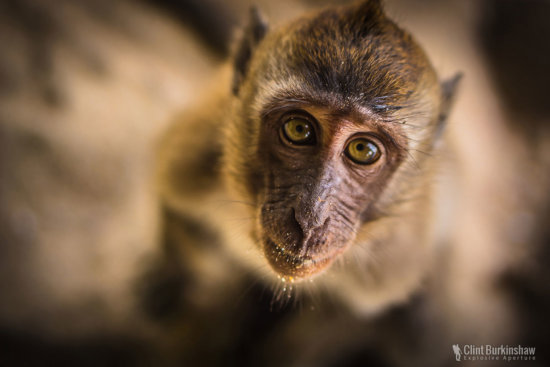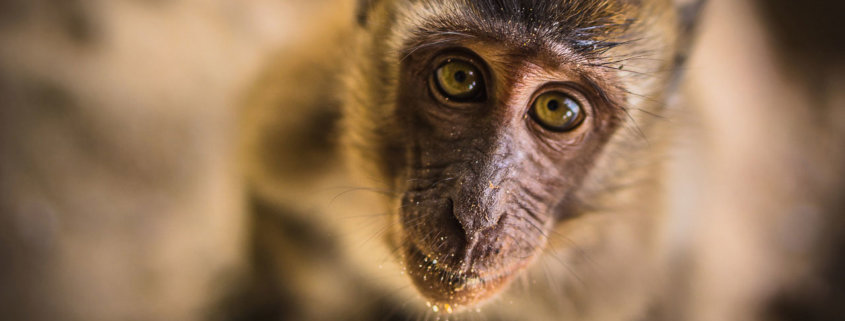What Aperture should I use for Nature Photography?
The size of your aperture you decide to use has a huge impact on your scene. Are you shooting macro? Wildlife photography? Perhaps there is a vast landscape in front of you? The aperture (or f-stop) you use can very much make or break your photo.
Here on Visual Wilderness we love our nature, whether it be flora, fauna, or those beautiful natural landscapes. Here I’ll offer some advice on what aperture you could use to successfully capture these elements.
Macro and Wildlife
There’s basic guidelines to follow when shooting subjects. With wildlife and macro photography, the more attractive aperture size (f-stop) will generally be a lower f-stop number. How low you go often depends on the lens you have. But comparing two photos of the same scene (for example, a lion stalking through grass) … a high f-stop version versus a low f-stop version, 9 out of 10 people are more attracted to the lower f-stop image. Shooting with a low f-stop number provides you with a low depth of field shot that really helps focus your eye on the intended subject, blurring out the foreground and background.

An f-stop appropriately chosen for such a scene. Here a wider aperture allows for the intended focal point to really stand out
Landscapes
Vast landscapes that extend from the ground under your feet, out to the distant horizon, can be very intimidating to photograph. Once you decide on your focal length, you can start deciding on what f-stop you’ll need to use. Another rule of thumb is to use between f/8 and f/16. If your landscape is entirely in the distance, you can potentially get away with using your lenses sweet spot (somewhere around f/8 – f/11). When your scene is going to incorporate a foreground that’s closer to the lens, then you’ll need to use f/14 – f/16 in order to ensure everything is in focus. If you have object(s) extremely close to your lens, I suggest using f/14 – f/16 and using a technique called focus stacking, where you take multiple photographs, starting focusing close to the lens, moving your focus point back over several photographs.
Again, it may be only a ‘rule of thumb’ to have everything in focus for a landscape photograph, as it is ultimately an artistic choice. But again, until you’re a pro, having a higher f-stop number that generates large depth of field is good advice.

A narrow aperture (high f-stop) allows me to obtain focus in both the foreground rocks and background mountain
Tip: Use Single Point Focus
Cameras these days come with a myriad of different focus options. For wildlife, nature, and landscape photography, I personally recommend using a single point focus. I include this in here because, when you’re shooting on a low f-stop, your depth of field is going to be quite narrow; single point focus (whether it’s single shot or continuous AF) ensures you’ll be focusing right where you want it to. This is also important on large depth of field shots (with a small aperture/high f-stop) such as landscapes. This is because you generally want objects as close as possible to your lens to be in focus in addition to the horizon. Learning where to pin-point your single point AF (via methods such as hyperfocal distance measuring) also help in vast landscapes and keep everything in your image tack sharp.
At the end of the day, the aperture (f-stop) used is an artistic choice each photographer must make. There’s no doubt that the use of certain apertures in specific circumstances go a long way to improving the look of your photo. But, I hope this quick article gives you a good head-start on choosing the aperture for you and your photography.



 Jaclyn Tanemura
Jaclyn Tanemura





thank you for responding. Hyperfocal distance was an important concept in the past. Now superseded by focus stacking. And the theoretical loss of detail at higher f-stops which I have personally never been able to fully discern. Remember and talk about the F64 pioneers of which Ansel was a charter member.
We do not explicitly mention anyone in our video courses….but we do have a discussion on why we do not shoot past F16 with our current lenses. The course focus on how to properly use the technique in the field.
No one talks about hyper-focal focusing any longer. The point where you theoretically have maximal depth of field. And there is also a theoretical loss of detail when maximally stopped down (max f-stop). All aspects not discussed in this article.
You forgot to mention dffraction, Sharpness fall of in the corners due to lens imperfections, wind, weather, noise due to high ISO and more that can potentially impact the sharpness of your images. While you bring up a good (and valid) points the article was more focused.
FYI: Not only do we know about Hyperfocal Distance we are planning to offer an entire video course about it.